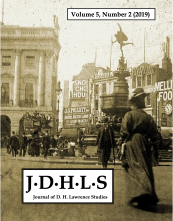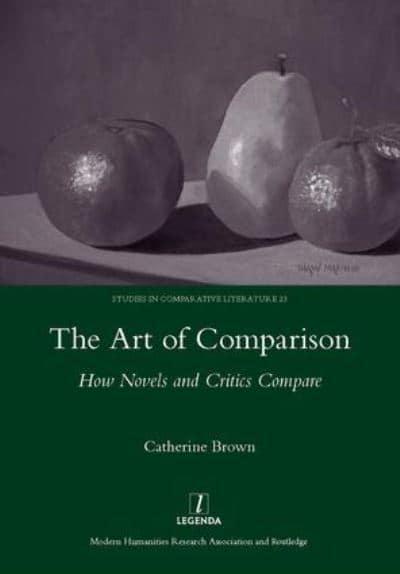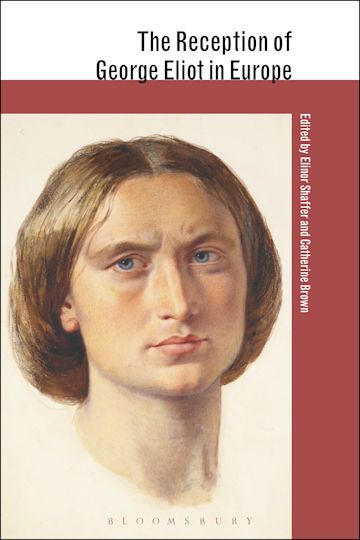I was guest editor, with permanent editor of JDHLS Sue Reid, of articles developed from selected papers given at the 14th International D.H. Lawrence Conference 2017, London Calling: Lawrence & the Metropolis.
These constituted a special edition of the Journal of D.H. Lawrence Studies (the peer-reviewed house journal of the D.H. Lawrence Society, which latter is based in Lawrence’s birthplace, Eastwood, UK). Vol. 5, no. 2, 2019.
Its topic is Lawrence’s relationship to London.
This topic is the same as that of the Conference, of which I was Executive Director.
My introduction to the volume may be found here.
Subject of the volume
London played a crucial role in Lawrence’s early life: he taught here, got his first literary breaks here, and even got married here in 1914. It was in London that he met the friends and patrons who launched his career and facilitated his travels, and whenever he and Frieda returned to England, it was to London that they came first.
Lawrence visited London around fifty times – for the first time in October 1908 for his interview for a teaching position in Croydon, and for the last time in September 1926. Over those eighteen years he visited or lived in London in every single year, apart from during his travels in 1920-22.
He saw the city grow from seven to eight million people, and become the metropolis we know today, with its buses, trams, private cars, bridges, Underground stations, West End theatres, and electric street lights. He knew London as it was approaching the historical peak population; this was followed by decline, and which has only just (in 2015) been exceeded.
He knew the London of the Edwardian period, of the War, and of the jazz age. He knew middle-class outer-suburban Croydon, but also some of London’s most fashionable districts, where his friends lived: Hampstead (Edward Garnett, Dollie Radford and Catherine Carswell), St. John’s Wood (Koteliansky), Mecklenburgh Square (H.D. and Richard Aldington), and Bedford Square (Lady Ottoline Morrell).
London was the legal, as well as the literary, artistic and theatrical, centre of England. In 1913 Frieda’s divorce hearing was heard there; in 1915 Lawrence was examined for bankruptcy at its High Court; in the same year The Rainbow was tried at Bow Street Magistrate’s Court; in 1927 David was produced at the Regent Theatre; in 1928 Catherine Carswell oversaw the typing of part of Lady Chatterley’s Lover there; in 1928 Lawrence explained ‘Why I Don’t Like Living in London’ in The Evening News; and in 1929 his paintings were exhibited at the Warren Street gallery and impounded.
Given his hatred of London’s intellectualism and authoritarianism, and his objections to metropolises in general, it is not surprising that much of what Lawrence writes about London is negative. But, as he admitted in 1928, ‘It used not to be so. Twenty years ago, London was to me thrilling, thrilling, thrilling, the vast and throbbing heart of all adventure.’
For such a nodal city – the world’s biggest city, the heart of the world’s biggest empire, and a centre of international modernism – it has a peripheral place in his work and in work about him. But Lawrence could not have become the person and writer he did without having known his native capital city.
The volume welcomed articles on topics including:
- Lawrence’s experiences of, and/or reactions to, London and its various social groups and geographical districts
- Lawrence’s relationships with individual Londoners
- Lawrence’s interactions with London-based journals and publishers
- The suppression of The Rainbow
- The premiere of David in London
- Lawrence’s exhibition of paintings at the Warren Street Gallery
- Works written by Lawrence while he was resident in London
- Lawrence’s responses to and thoughts about cities in general
Articles selected for development:
CATHERINE BROWN
The Young Russian”: Lawrence’s Kot, Kot’s Russia, and the First World War
This article traces what effect Lawrence’s knowledge of London-based Russians had on his responses to the First World War. He both learned of this War’s outbreak, and celebrated its Armistice, in the company of his Ukrainian-Jewish friend Samuel Solomonovich Koteliansky, who like Lawrence opposed the War, but who had an ambivalent response to the October Revolution which removed his native country from participation in it. Midway through the War, Lawrence’s friend and sometime admirer Ivy Low married a different London-based Ukrainian Jewish revolutionary exile, Maxim Litvinov, who was later to rise to prominence in the Soviet polity. Tracing Lawrence’s responses to these men, and to their own responses to events, adds a new dimension to our understanding of Lawrence’s War. The paper sets off from a consideration of ‘the young Russian’, Maxim Libidnikov, in the ‘Crème de Menthe’ and ‘Gudrun in the Pompadour’ chapters in Lawrence’s profoundly War-inflected novel Women in Love. It considers the inspirations for this character, and what his depiction tells us about the contested, fluctuating, signifier that was Russia at the time for Lawrence, as for most Britons – from socialists to conservatives. This exploration will be set in the contexts of Lawrence’s evolving relationship with Russian literature on the one hand, and Communism on the other. The Cold War future that Litvinov and Koteliansky lived to see, but which Lawrence did not, highlight those aspects of Lawrence which were never to develop. A few final, comparative remarks will be made upon Russia as a contested signifier today.
LEE M. JENKINS
‘another Bloomsbury set’: Lawrence, Life Writing, and London Modernism
Closer critical attention has been paid to Lawrence’s engagement with members of the Bloomsbury set like Ottoline Morrell and Bertrand Russell than to his involvement with “another Bloomsbury set,” a circle of writers including H.D., Richard Aldington, and John Cournos.[1] This article traces the close textual relationships that would develop between Lawrence and these London modernists when, in the autumn of 1917, following their expulsion from Cornwall, the Lawrences took temporary refuge in H.D.’s bedsit at 44 Mecklenburgh Square. Aaron’s Rod (1922), which was begun in “the Mecklenburgh Square days,” forms the nucleus of an intertextual wartime cluster comprising, among other-inter-related books, Cournos’ Babel (1922) and H.D. Bid Me to Live (1960).[2] H.D. would define her autobiographical novel as a “retour,” a return to the room at 44 Mecklenburgh Square which is rendered in her book as a mise en scène of writing, of H.D. writing Lawrence writing, and of H.D. writing herself writing, or writing herself rewriting Lawrence’s writing: “I will go on scribbling. […] This notebook is a replica of the one you were writing in that day.”[3] Likewise, in Babel, Cournos splices Lawrence’s writing into his own, creating something like a recursive playback loop. Read together, this article argues, Aaron’s Rod, Bid Me to Live, and Babel form a composite meditation on the complex relationship between literature and lived experience in time of war.
[1] Perdita Schaffner, Afterword to H.D., Bid Me to Live (London: Virago, 1984), p. 185.
[2] 3 L, p.728.
[3] H.D., Bid Me to Live, p. 172.
BARBARA KEARNS
Driven
Looking back on the frenetic hormonal activity of his Croydon years, Lawrence, in Don Juan (1912) described himself as having been ‘driven’ by irresistible forces. They disturbed his nights and distracted his days and found expression in poetry in praise of his penis: ‘Is he calling, the lone one? Is his deep Silence full of summons?’
One of the women seemingly so summoned was Helen Corke, thereafter poetically conceived of as an enchantress, a witch, a Bacchante, responsible for engendering thwarted passions. Former studies have concluded that this relationship was probably never consummated. However, evidence reveals that it was, and that their informal relationship actually had a distinct pattern to it.
Scrutiny of the guidebooks Helen used to direct their numerous weekend rambles across the Surrey Downs has allowed us firstly, to determine the precise location of the (still extant) Yew Tree on the Downs, featured in Liaison, Witch a la mode, The Trespasser etc.; and secondly to discover the probable model for the Gamekeeper’s hut and pheasantry featured in The Soiled Rose (1913) and Lady Chatterley’s Lover (1928). The conceiving of such a setting for an erotic pastoral idyll was as much a product of Lawrence’s sexual phantasies during the Croydon years, then, as it was of anything that followed.
HOLLY LAIRD
Figuring Mobility in D. H. Lawrence’s Urban Poems
During the war, from 1916 to 1918, while Lawrence was constrained from leaving England, he mined two of his college notebooks as well as more recent manuscripts for new books of verse. Lawrence contemplated, then decided against, writing a sequence of town and city poems, titled In London. It is productive to reconsider his published poems from the war in relation to Lawrence’s urbanity. In this essay, I pose the question, more specifically, of how Lawrence represents mobility in this poetry and suggest that Lawrence’s tendency to use the same language in opposite ways in his “struggle for verbal consciousness” is evident not only in the novels, where critics have noted it, but also in the verse during this phase of his career. By focusing on mobility and its opposites in the city and town poems of the first world war, this essay shows the complex and dynamic ways in which the oft-noted Lawrentian binary between the mechanical and the organic operates in this verse, not settling into simple polarity.
STEWART SMITH
Narcosis and Nihilism: D.H. Lawrence’s ‘Dull London’
This paper will argue that D.H. Lawrence’s 1928 essay, ‘Dull London’, crystallizes his mature thought on the metropolis and modernity more generally. More specifically, it shall scrutinize the idiom of narcosis Lawrence deploys here to claim that his diagnosis of nihilism is inflected by his perception of modernity’s dominant hedonic values: Lawrence dismays at the English people, anaesthetized by ‘the drug of easiness and niceness’, and the pervasive ‘sense of abject futility’ characterizing the capital.[1] Moving towards a consideration of Lawrence’s presentation of London in his later fiction, this essay will invoke Nietzsche, whom Lawrence discovered whilst teaching and living in Croydon in 1909. Doing so it shall discuss a key feature of the Lawrence-Nietzsche relationship hitherto neglected in the critical discourse: both tie the overcoming of modern nihilism to the re-configuration of the value of suffering. It shall therefore read Lawrence’s depictions of ‘dreary’ London in The Plumed Serpent (1926) and Lady Chatterley’s Lover (1928) in conjunction with Nietzsche, contending that Lawrence sought not only to constitute new meaning, or hope, in these works, but also to convey that modern experiences of paralysis or exhaustion are bound to hedonic attitudes to suffering.
[1] D.H. Lawrence, Selected Essays (Penguin, London, 1950), pp.124-25
JANE STAFFORD
First Encounters: D. H. Lawrence, Katherine Mansfield, and the “Wizard” London
D.H. Lawrence and Katherine Mansfield arrived in London within two months of each other in 1908, Lawrence from provincial Eastwood, Mansfield from colonial New Zealand. Both were conscious that they had made a significant move from a periphery to the centre; both saw the advantages of the move in terms of their literary ambitions. London, for both writers, had been an idea, a set of associations, part of the imaginary of the provincial and colonial worlds in which the two were brought up. It was ‘the wizard London’, which, Mansfield wrote as she journeyed through the New Zealand bush in 1907, laid ‘cold fingers about her heart’ [i]; for Lawrence London was the ‘pompous, magnificent capital of commercialdom, a place of stately individualistic ideas’ [ii]. On their arrival in the metropolis, London became an actual physical location; exotic, hostile, intoxicating, and off-putting. As Ford Madox Hueffer put it, London was ‘a ragout of titbits’, ‘a permanent world’s fair’, ‘a great slipshod, easy going, good-humoured magnet.’ [ii] For Lawrence and Mansfield, London represented a set of social possibilities which could be gratifying or intimidating by turns. And most importantly, London was the location of hte professional network of editors, reviewers, publishers, and informed readers, as Lawrence put it, to ‘break me an entrance into the jungle of literature’. For both, inhibited, variously, by place of origin, class, and gender, entry into this jungle, these sites of activity and recognition, was not straightforward. However, both were aware that their backgrounds gave them access to novel and marketable subject matter and modes of writing.’
[i]Katherine Mansfield, The Urewera Notebook, ed. Anna Plumridge (Dunedin: Otago UP, 2015), 104.
[ii] DH Lawrence, 1 Letters, ed. James T. Boulton (Cambridge: CUP, 1979), 80.
[iii]Ford Madox Hueffer, The Soul of Modern London(London: Dent, 1905), 20.
JOYCE WEXLER
How London Launched Lawrence’s Career
The young man who came to Croydon in 1908 to take a job as an elementary teacher was not the person for whom Frieda Weekley left her husband and children in 1912. She eloped with an author. Lawrence became that person in the literary circles of London. There he met the three people who changed the course of his career: Ford Madox Hueffer (later Ford), Edward Garnett, and Frieda Weekley. His career began when Hueffer accepted some poems for the English Review. Hueffer introduced him to literary “celebrities” and told everyone who would listen that Lawrence was a genius. Edward Garnett became a close friend, offering business and editorial advice. Living so close to London, Lawrence was able to take advantage of these connections. He quickly learned how to maneuver in the literary market. Hueffer and Garnett were ideal mentors. They had fostered new writing by figures like Conrad and James, and they defied conventional morality in their personal lives. Although Lawrence assured his childhood friend Jessie Chambers that he would have been happier back in Nottingham, his letters reveal how much he enjoyed the companionship and admiration of other writers. They helped him improve his writing and strengthened his confidence in his vocation. London launched his career and prepared him for Frieda. Her influence was immeasurable. He said that she was “‘the freest human being I know.’” She and her family introduced him to Continental ideas about politics, economics, sexuality, and psychology, encouraging the provincial regionalist to become an international modernist.


